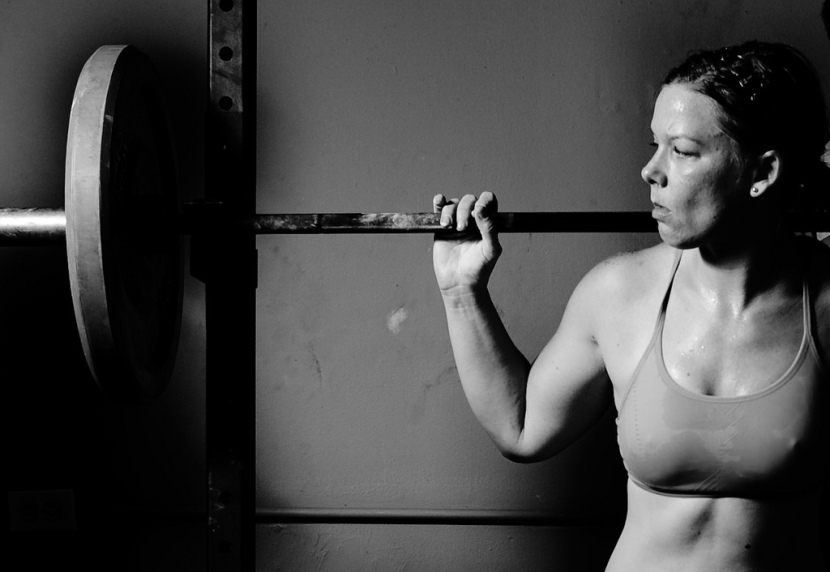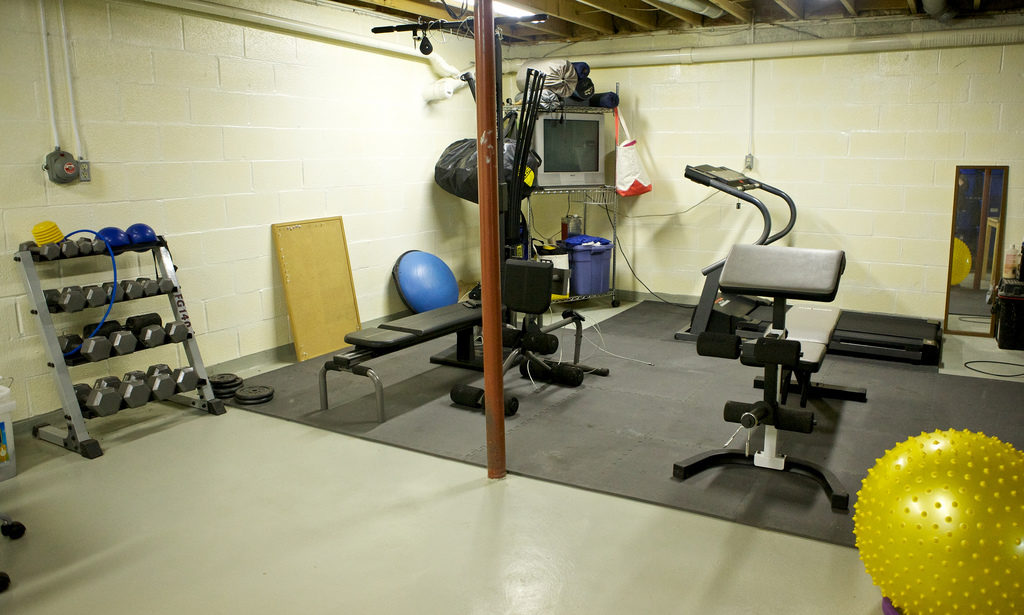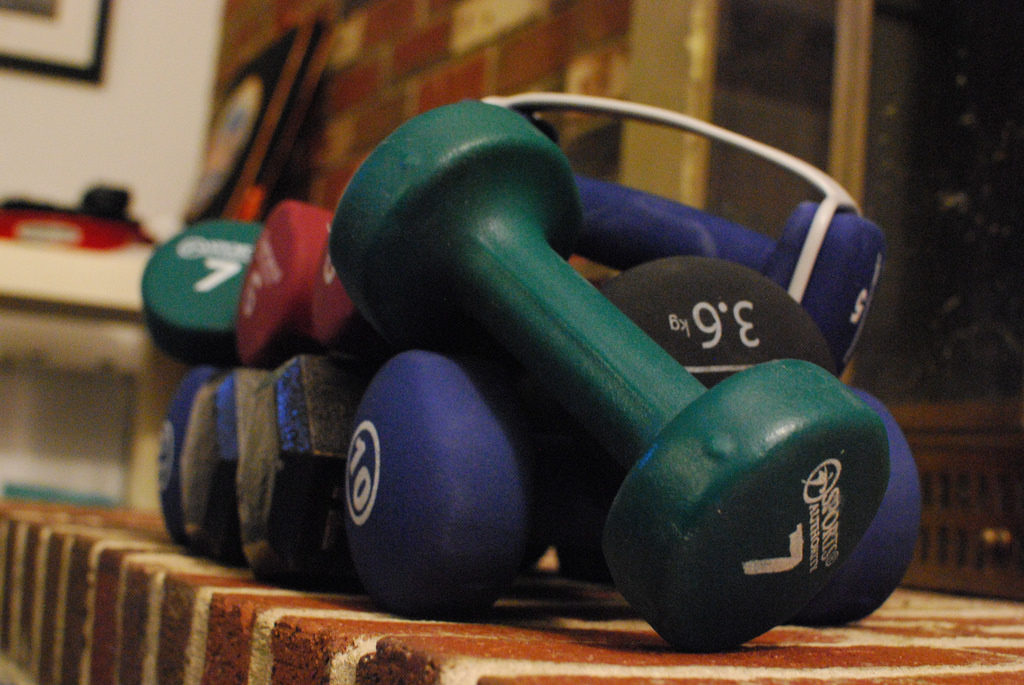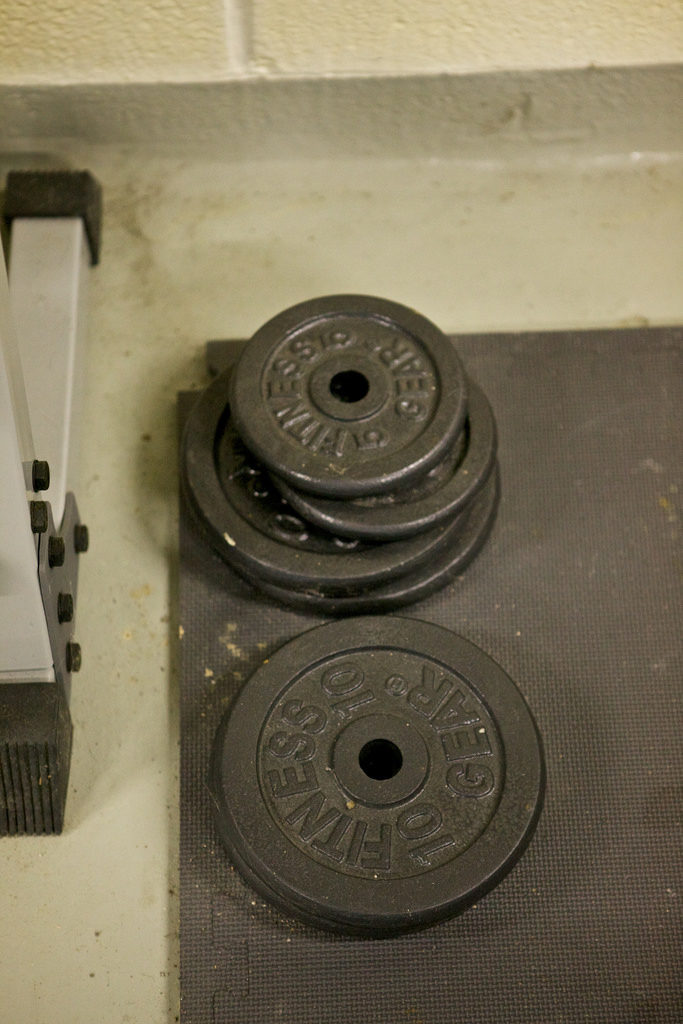How To Create A Garage Gym On A Budget

If you've seen our previous articles about the homeowner who turned their garage into an animal shelter office, or the bike enthusiast who built his own garage bike storage, then you know the garage is more than just a place for things to collect dust. But how about creating your own garage gym?
The convenience factor is why most people decide to put a gym in their home or garage. And although you can’t put it together for free — unless you’re a bodyweight fanatic, using your own body instead of barbells and sandbags to work out with — with some searching and a bit of patience (and maybe a friend who welds), it can be done on a budget.
Don’t Skimp on Certain Items
J Burgeson at Garage Gyms, who invested in his own weight-training equipment so he wouldn’t have to drive to and from the gym, pay dues and then wait in line, says the “barbell is the most important piece of exercise equipment in your gym.”
His advice:
“Do not buy your bar at Wal-Mart or off Amazon. Those $100 bars have max loads of 250, 300, or 600 pounds. That’s a joke to only handle a few hundred pounds. Think about it — it’s not unreasonable to squat 300 pounds or even bench 250 pounds. So if you are on a thin budget, buy [an inexpensive] bench and rusty steel plates before you go cheap on your barbell.”
The Actual Cost
Jerred Moon of EndofThreeFitness guest posted on the Art of Manliness blog. The article is called How to Turn Your Garage Into a Home Gym, and in it he writes: “You can do it for as little as $500, which is the equivalent of about a year and a half of the cheapest gym pass. If you use your garage gym for just two years, you will have made money on the investment. In addition, it only takes about two weeks to complete. And that’s if you take your time.”
Performance coach Isaac Wilkins of Beyond the Barbell agrees with the $500 price tag, and in his blog post Building a Garage Gym For Athletes … On a Budget outlines exactly how he did it. Using Amazon and local stores, he bought
- a squat rack,
- a flat bench,
- a weight set,
- dumbbell handles,
- a medicine ball,
- a tire sled,
- a sledge hammer
- and sandbags
…all for slightly more than $400. That leaves room for flooring, a fan or more weights.
Versatility Matters
The people at Hammerhead Strength posted an article called Garage Gym Ideas for the Budget Minded Athlete. In it, they say that versatility matters when buying equipment. “If you can’t use a piece of equipment 5 ways, then it had better be low priced or stellar at what it does.”
They add that kettlebells are better than barbells because in addition to getting the same benefits from both sets of equipment, you “can develop your shoulder strength in different ways” when using kettlebells.
They also recommend gymnastic rings and list numerous exercises that can be done with them at varied intensities. Resistance bands are another piece of equipment deemed necessary for your DIY garage, for use in weighted pull-ups and resisted push-ups, and to help with stretching and pull-ups.

Making Your Own
There’s a series of articles on EveryLastRep.com, and in one, called DIY Garage Gym Equipment: Weights, they look at making your own. While welding and molding hot iron might be taking the whole DIY thing a bit far for most people, it is doable for those with experience.
Matt Biss at Bodybuilding.com says in his article Go Big AND Stay Home: How To Build Your Ultimate Home Gym that one of his five must-have pieces in a home gym is a power rack, and that’s something that will usually cost you a minimum of $500 new. By scouring junk yards and buying a piece of broken equipment, Matt was able to build his rack by hand for less than half that.
Becca Borawski Jenkins, managing editor at Breaking Muscle, says one of her top picks for home gym equipment is a plyo-box. In her article 10 Essential Items to Outfit Your Home Gym, Becca writes:
“Boxes are a great item for building explosive power and quickness. You can also use them for squatting, for bench dips, and for other non-jumping exercises. You may want to build your own wooden box if you have the ability, or hire a friend. In a pinch, you can also just go down to the hardware store and purchase an irrigation box.”

In her Guide to Building a Home Gym, Jenn Nims says she used Craigslist and got “everything, aside from … kettlebells, from Craigslist at a fraction of the price of retail [including] some dumbbells off of a local Freecycle group.” She says her husband built them a pull-up bar for less than $10 using just a steel pipe and a 2×4.
As an aside, personal trainer Neghar Fonooni has some help for those of you struggling with the bar in her post Going to the Bar: 5 Killer Pull-up Tips. She calls them “…actionable tips that will help you either achieve your first pull-up, or increase your volume and load when it comes to getting over the bar. No matter where you are in your pull-up practice, these tips will help you get better.”
Do It For Free
If you’ve got no gym membership and no cash to build a gym of your own at home, fear not. Steve Kamb, founder of Nerd Fitness, is a fan of using your (free) body to work out.
In his post Beginner Body Weight Workout: Burn Fat, Build Muscle, Steve writes, “By doing bodyweight circuits, where you complete one exercise right after the other without stopping, you’re both building muscle and getting a cardiovascular workout.”
BJ Gaddour, author of Your Body is a Barbell, agrees you don’t need an ounce of equipment to work out. He shared some of his tips on Adam Bornstein’s blog over at Born Fitness, in The World’s Most Efficient Bodyweight Plan.
The plan, he writes, is to “alternate between 50 seconds of work and 10 seconds of rest for each exercise” for a whole-body workout.

Former world-class powerlifter and strength and conditioning consultant David Sandler of StrengthPro.com is the author of the book Fundamental Weight Training. In it, he give tips on how to tone biceps and triceps in the gym or at home. “When you understand the way a muscle is worked, you can find a method to stress them enough to create a challenge,” Sandler writes.
An example: “Using the straight bar curl position, you can curl resistance tubing to work your biceps.”
Another: “For your triceps, pull the tubing up to your shoulders, extend your elbows overhead, and perform arm extensions overhead (triceps extensions). Don’t forget about your own body weight. Doing push-ups with your hands together will get a good triceps burn.”
To work your forearms, David continues, you can “grab nearly any object in your house that is heavy enough [like] soup cans, heavy pots, heavy books, and even your kids.”
David Reavy, a board-certified clinical specialist in orthopedic physical therapy in Chicago and founder and CEO of React Physical Therapy, says that beginners should actually start with bodyweight exercise before doing weight training.
In his blog post called No Equipment Living Room Workout on MyFitnessPal, David warns, “If you don’t have control of your body before you throw weights into the mix, you could end up with an injury.”
Personal trainer Grace Menendez is another fan of working out with your own bodyweight, and she has a guide called A Quick Bodyweight Workout You Can Do Anywhere in the strength training section of the Girls Gone Strong blog.
And by “anywhere,” she means playground, parking lot or any empty space you can stretch out in — you don’t even need a garage!
Images:
Greg Westfall / Flickr
Chiot’s Run / Flickr
slgckgc / Flickr
Adrian Scottow / Flickr
